Q
Can Sonata provide a quiet driving experience?
Yes, Sonata can provide a quiet driving experience. At idle, the cabin remains notably quiet since the engine isn't running, complemented by effective sound insulation. Even when driving in pure electric mode, the interior noise levels remain comparable to the gasoline version.
During high-speed driving with the engine engaged, while noise measurements may slightly exceed recommended thresholds, the subjective experience remains within acceptable limits. Additionally, equipped with triple-layer door seals and acoustic insulation materials, the Sonata maintains idle noise at just 42 decibels and only reaches 58 decibels at 60 km/h—figures that stand out in its class. Overall, it delivers a quiet and comfortable driving environment.
Special Disclaimer: This content is published by users and does not represent the views or position of PCauto.
Related Q&A
Q
What is the life expectancy of Hyundai Sonata Hybrid?
The service life of the Hyundai Sonata Hybrid can vary depending on multiple factors. Generally speaking, the battery of the Sonata Hybrid usually lasts about 5 years. As for other components, Hyundai offers a 5 - year or 300,000 - kilometer warranty for the whole vehicle, which reflects the expected durability of the vehicle under normal use conditions. The warranty periods for some core components, such as the power battery assembly, drive motor assembly, motor controller assembly, and vehicle controller assembly, are even longer, sometimes up to 8 years or 150,000 kilometers. Regular maintenance, good driving habits, and usage conditions all play important roles. If properly maintained, serviced on time, and driven carefully, this car has the potential to serve you for over 10 years and cover a mileage of as much as 200,000 kilometers or more.
Q
Which model of Hyundai Sonata is the most expensive ?
Currently, the most expensive model of Hyundai Sonata in Malaysia is the Sonata N-Line version, with an official price of approximately RM218,888 (excluding insurance). This high-performance version is equipped with a 2.5L Turbo GDi four-cylinder engine, capable of outputting 290 horsepower and 422 Nm of torque. Paired with an 8-speed wet dual-clutch transmission and front-wheel drive, it can accelerate from 0 - 100 km/h in just 6.2 seconds.
Compared with the standard Sonata (equipped with a 1.6L Turbo or 2.0L naturally aspirated engine), in addition to its powerful performance, the N-Line is equipped with a sport-tuned suspension, 19-inch wheels, an exclusive N Line exterior kit (including a more aggressive aerodynamic design and quad exhaust pipes), and an all-black interior with red stitching, giving it an overall sporty coupe style.
Although it's price is high, the N-Line version offers a comprehensive configurations, including the advanced Hyundai SmartSense active safety system (such as SCC Smart Cruise Control and FCA Forward Collision Warning), a panoramic sunroof, and a Bose sound system. It's a great choice for consumers who seek both performance and luxury.
Q
How about the speed performance of Hyundai Sonata?
The speed performance varies among different models of the Sonata. The top speed of the 2020 Hyundai Sonata 2.5 Premium can reach 210 km/h, while the top speeds of the 2017 Hyundai Sonata 2.0 Elegance and Hyundai Sonata 2.0 Executive are 200 km/h. These figures reflect the vehicle's potential in terms of power performance. However, in actual driving, it's difficult to reach the vehicle's top speed due to factors such as road conditions, traffic regulations, and driving behavior. For example, the speed limits on ordinary city roads are usually quite low. Although the speed limits on highways are relatively higher, it's not allowed to speed at will. It is recommended that everyone abide by the regulations while driving, reasonably control the speed according to the actual situation, and ensure driving safety.
Q
What's the engine displacement of Hyundai Sonata?
Different models of Sonata have various engine displacements. For example, the 2020 Hyundai Sonata 2.5 Premium is equipped with an engine with a displacement of 2497cc, which can provide ample power to meet the needs of daily driving and some driving scenarios with power requirements. As for the 2017 Hyundai Sonata 2.0 Elegance and Hyundai Sonata 2.0 Executive, their engines have a displacement of 1999cc. Relatively speaking, they may perform better in terms of fuel economy and can also provide stable power output for the vehicle. Engines with different displacements each have their own characteristics. Consumers can choose the model that suits them according to their own driving habits, such as the demand for power and considerations regarding fuel consumption.
Q
What's the service life of Hyundai Sonata's spark plugs?
The service life of the Hyundai Sonata's spark plugs depends on their types. The more affordable nickel alloy spark plugs typically last about 20,000 - 30,000 kilometers. Platinum spark plugs, with better heat and corrosion resistance, can be used for 60,000 - 80,000 kilometers. Iridium spark plugs, known for their high ignition performance, usually have a service life of 80,000 - 100,000 kilometers or even longer.
However, other factors can also have an impact. If the vehicle often drives under harsh conditions such as extreme temperatures, high humidity, and dusty areas, or experiences frequent starting and stopping, the spark plugs may wear out more quickly. Aggressive driving habits like rapid acceleration and hard braking can also increase the engine load and accelerate the aging of the spark plugs. Therefore, although the above are general reference standards, it's very important to regularly check the condition of the spark plugs and follow the vehicle maintenance manual for optimal performance.
Q
Does Hyundai Sonata have spark plug wires?
Yes, Hyundai Sonata is equipped with spark plugs, but it doesn't have the traditional externally exposed spark plug wires. Spark plugs are crucial components in the engine's ignition system, as they generate electric sparks to ignite the air - fuel mixture in the engine's combustion chamber, enabling the engine to operate properly.
With the development of modern automotive technology, many vehicles, including the Hyundai Sonata, have adopted the Distributorless Ignition System (DIS) or the Direct Ignition System (DI). In these systems, the ignition coils are directly installed on top of the spark plugs, providing high - voltage electricity directly to the spark plugs. They no longer rely on the traditional long spark plug wires to transmit high - voltage electricity.
This design reduces electromagnetic interference, improves ignition efficiency and engine performance, and also decreases the likelihood of spark plug wire failures, such as electrical leakage and aging. At the same time, it enhances the overall reliability of the vehicle and its fuel economy.
Q
How many cylinders does Hyundai Sonata have?
Whether it's the regular version or the N-Line version, the Sonata features a 4-cylinder (inline-four) engine layout, which is also a common engine configuration for mainstream mid-size sedans these days. This setup can not only deliver decent power output but also balance it with fuel efficiency. Hyundai has invested lot in developing turbocharged engine technology in recent years. For example, the SmartStream series of engines has optimized combustion efficiency and reduced emissions, enabling the four-cylinder engine to achieve performance comparable to that of a six-cylinder engine. If car owners prefer more potent power, they might need to consider higher-end rear-wheel-drive or all-wheel-drive performance cars. However, for general family use or mild sporty driving needs, the 1.6T or 2.5T four-cylinder engines are good enough for daily driving and highway cruising.
Q
How much does it cost to change Hyundai Sonata's spark plugs ?
The cost of replacing the spark plugs of Hyundai Sonata ranges from approximately RM200 to RM500, depending on the model year, engine type (1.6T or 2.5T), and the brand of spark plugs used (such as NGK, Denso, or original factory parts). A standard 1.6L Turbo engine usually uses iridium or platinum spark plugs, which cost around RM50 to RM150 each. On the other hand, the 2.5L Turbo engine (N - Line version) may require higher - performance spark plugs, which are slightly more expensive (around RM80 to RM200 each).
In addition, labor costs typically range from RM80 to RM150. Dealerships may charge more, providing factory - certified parts. Third - party repair shops offer lower prices, but you need to make sure the technicians perform well in the operation.
The spark plug replacement interval for the Hyundai Sonata is generally between 60,000 and 100,000 kilometers. However, if your vehicle experiences vibrations, has difficulty starting in cold weather, or shows an increase in fuel consumption, you may need to check the spark plugs earlier. It's recommended that owners have technicians inspect the spark plugs during regular maintenance and choose high - quality spark plugs that can withstand high temperatures and resist carbon deposits to ensure optimal engine combustion efficiency.
Q
How many spark plugs does Hyundai Sonata have?
Hyundai Sonata usually has four spark plugs. This is because most Sonata models are equipped with four-cylinder engines, and in gasoline engines, each cylinder is typically assigned one spark plug. Spark plugs play a crucial role in the operation of the engine. They are responsible for igniting the air-fuel mixture in the cylinders, enabling the engine to generate power. For example, the 2020 Hyundai Sonata 2.5 Premium and the 2017 Hyundai Sonata 2.0 Elegance/Executive models are both equipped with four-cylinder engines, and these models all have four spark plugs. Regularly inspecting and timely replacing the spark plugs according to the vehicle's maintenance schedule helps ensure smooth engine operation, good fuel efficiency, and reliable vehicle performance.
Q
How often should I change the spark plugs in my Hyundai Sonata?
The frequency of replacing the spark plugs in your Hyundai Sonata depends on the type of spark plugs installed. Nickel alloy spark plugs are affordable, but they have a short service life. You should consider replacing spark plugs when the vehicle has traveled about 20,000 - 30,000 kilometers. Platinum spark plugs are known for their good heat resistance and corrosion resistance and can be used for 60,000 - 80,000 kilometers. Iridium spark plugs have high ignition performance, and their service life is generally 80,000 - 100,000 kilometers or even longer.
In addition, the operating conditions of the vehicle also affects the service life of spark plugs. If you often drive in harsh environments such as extreme heat, humidity, and dust, or frequently start and stop the vehicle, or have a habit of aggressive driving, the spark plugs may wear out fast, and you may need to replace them early. Regularly refer to the vehicle's owner's manual, as it may provide more specific guidance for your Sonata model.
Latest Q&A
Q
What Are the Dimensions of BYD Seal? Get to Know Here
The BYD Seal is a Class D pure-electric sedan. It has a body length of 4,800 mm, a width of 1,875 mm, a height of 1,460 mm, and a wheelbase of 2,920 mm. These dimensions result in a relatively spacious interior, offering passengers a comfortable riding experience. In particular, the legroom and headroom for rear passengers are quite impressive. Meanwhile, the reasonable wheelbase ensures good driving stability for the vehicle.
Moreover, its trunk has a capacity of 400 liters, which can meet the loading needs for daily trips and short - distance travels. Among vehicles in the same class, the BYD Seal's overall dimensions and space performance are quite competitive, and it can well meet the diverse usage scenarios of family and individual users.
Q
What's the Insurance Cost of BYD Seal? See How Much You Need to Pay
The insurance cost for the BYD Seal typically ranges from RM2,500 to RM4,000. The specific cost depends on multiple factors, including the vehicle price (usually between RM179,800 and RM199,800), the owner's age, driving record, NCD (No Claim Discount, with a maximum of 55%), the scope of insurance (such as comprehensive insurance or third - party insurance), and the insurance company's policies.
It is recommended that new car owners choose comprehensive insurance, which covers accidental damage, theft, natural disasters, etc. Although it costs more than regular third - party insurance, it provides more comprehensive risk coverage. Insurance companies may also adjust premiums based on the characteristics of electric vehicles (such as the cost of battery repair). Some companies may offer exclusive insurance plans for electric vehicles. It is advisable to get quotes from BYD authorized dealers or multiple insurance companies (such as Allianz, Etiqa, Tune Protect, etc.) and compare them to get a more accurate annual premium estimate.
When purchasing insurance, you can also ask if value - added services such as emergency road assistance and special natural disaster protection are included, which will slightly increase the cost. In addition, young drivers or first - time car buyers may face higher premiums. However, as they accumulate NCD, the insurance cost in subsequent years will be significantly reduced.
Q
How Heavy Is BYD Seal? Check Here to Know
The weight of different versions of the BYD Seal varies. The Dynamic EV weighs 1,922 kg, while the exact weights of the Premium (Extended Range) and Performance AWD models haven't been officially announced yet.
Vehicle weight affects a vehicle in multiple ways. A heavy body may offer better driving stability. When driving at high speeds, it gives a more stable feeling. For example, it's less affected by cross - winds when cornering. However, a heavy vehicle also has its drawbacks. It consumes more energy as it requires more power to accelerate, which can impact the vehicle's range to some extent. In terms of braking, a heavy body needs stronger braking force for effective stopping, which poses a challenge to the braking system.
Understanding the vehicle weight can help consumers make a more suitable choice when buying a car, based on their own needs and driving preferences.
Q
What Are the Different Variants of BYD Seal?
Currently in the market, there are three versions of the BYD Seal, namely the Dynamic EV, Premium (Extended Range), and Performance AWD. The prices of these three models vary. The Dynamic EV is priced at RM 163,800, the Premium (Extended Range) at RM 179,800, and the Performance AWD at RM 199,800. In terms of performance, there are differences in the official 0 - 100km/h acceleration times. The Dynamic EV takes 7.5 seconds, the Premium (Extended Range) takes 5.9 seconds, and the Performance AWD only takes 3.8 seconds.
In terms of range, the official pure - electric driving range of the Dynamic EV is 460km, the Premium (Extended Range) can reach 650km, and the Performance AWD is 580km. Regarding the battery type, the Dynamic EV uses the BYD Blade Battery, while the other two models use the Lithium iron phosphate battery. There are also differences in the driving modes. The first two models adopt rear - wheel drive, and the Performance AWD uses all - wheel drive. In addition, there are differences in details such as tire specifications. The front tire specifications of the first two models are 225/50 R18, and that of the latter is 235/45 R19.
Q
What's the Rim Size of BYD Seal?
The rim sizes of different versions of the BYD Seal vary. Among them, the front and rear tire specifications of the 2024 BYD Seal Dynamic EV are both 225/50 R18. Here, "R18" means the rim diameter is 18 inches. As for the 2024 BYD Seal Premium (Extended Range) and the 2024 BYD Seal Performance AWD, the front and rear tire specifications are both 235/45 R19, and the rim diameter is 19 inches. The rim size has a significant impact on the vehicle's performance, appearance, and compatible tires. Appropriate rim sizes can ensure the vehicle's performance in various aspects, such as driving stability, handling, and safety.
View MoreRelated News

Hyundai's Big Return to Malaysia: Top 5 Models Expected
MichaelMay 30, 2025
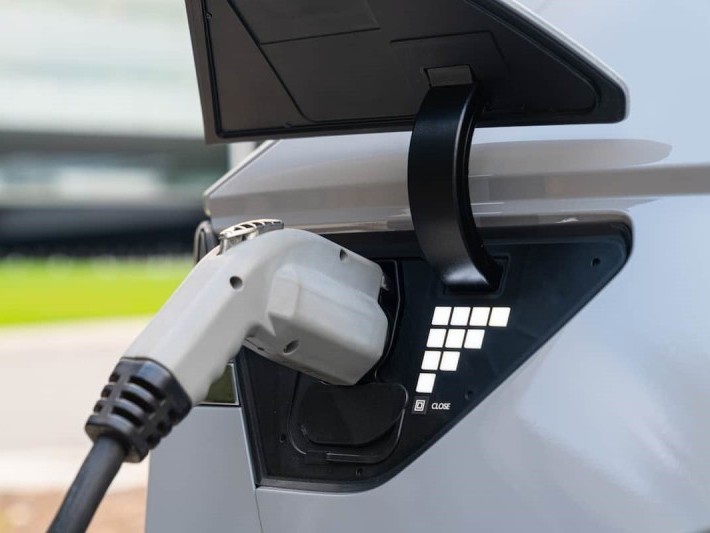
580,000 km & 87.7% Battery Health: Ioniq 5’s Incredible Durability
MichaelMay 6, 2025

Revolutionizing Hybrids: Hyundai’s New System vs. Toyota's Hybrid System
Kevin WongApr 22, 2025
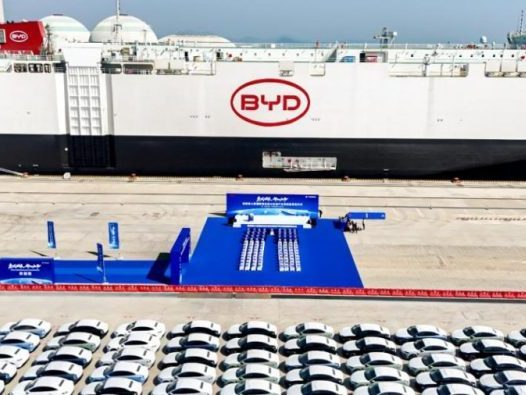
BYD Sets Global Sales Target of 5.5 Million Units for 2025
RobertMar 26, 2025
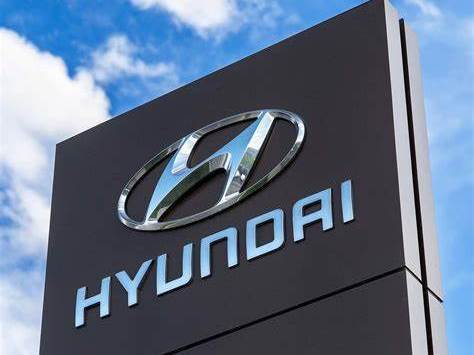
Hyundai is to launch an all-solid-state EV battery production line, but who's leading?
MichaelFeb 12, 2025
View More





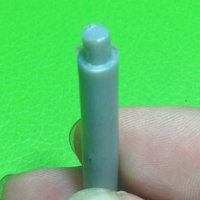
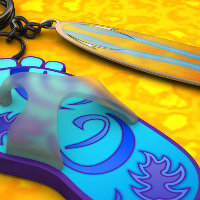




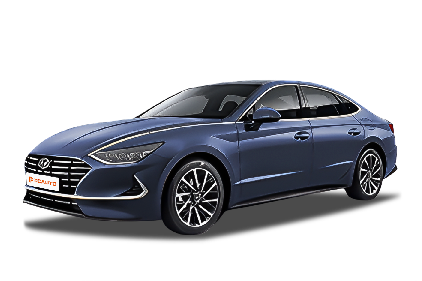





Pros
Cons